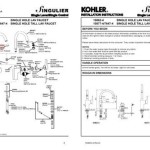How To Fit A Bathroom Wall Extractor Fan Without Attic Access
Installing a bathroom wall extractor fan can be a straightforward DIY project, but navigating the lack of attic access adds a layer of complexity. This guide will lead you through the process, equipping you with the skills and knowledge to achieve a successful installation without requiring access to the roof space.
Understanding the Challenges
Installing a bathroom extractor fan without attic access presents a unique set of challenges:
- Limited Visibility: Working blindly without attic access makes it difficult to accurately position and secure the fan.
- Cable Routing: Finding a suitable route for the power cable and ductwork becomes more complicated without an easily accessible pathway.
- Potential Obstacles: Hidden pipes, wiring, or structural elements in the wall cavity can obstruct the installation.
- Accessibility for Maintenance: Future access for repairs or cleaning may be restricted.
Essential Tools and Materials
Before you begin, gather these essential tools and materials:
- Bathroom extractor fan: Choose a model with a suitable airflow rate for your bathroom size and desired noise level. Consider features like humidity sensors and timer functions.
- Ducting: Flexible ducting is often the best choice when working without attic access. Ensure the diameter matches your fan's specifications.
- Cable: Use a suitable electrical cable for the fan's power requirements. Consult a qualified electrician for specific cable recommendations.
- Drill: A drill with appropriate drill bits for creating holes for the fan, ducting, and cable.
- Screwdriver: For securing the fan and other components.
- Level: Essential for ensuring the fan is installed level and straight.
- Jigsaw: For cutting holes in the wall for the fan and ducting.
- Measuring tape: For accurate measurements and marking.
- Pencil: Marking the installation points and duct routing.
- Safety glasses: Protecting your eyes from dust and debris.
- Dust mask: Protecting your respiratory system from dust while drilling and cutting.
- Gloves: Protecting your hands from sharp edges and debris.
Steps for Installing a Bathroom Wall Extractor Fan Without Attic Access
Follow these steps carefully to successfully install a bathroom wall extractor fan:
- Plan the Installation: Choose a suitable location for the fan, considering its distance from the bathroom's center and potential interference from pipes or wiring. Select the shortest and most unobstructed route for the ducting and cable. Mark the location of both the fan and ducting exit point on the bathroom wall.
- Install the Fan: Cut a hole in the wall using a jigsaw, ensuring it matches the fan's dimensions. Carefully remove any excess drywall or plaster. Attach the fan to the wall using the provided screws and brackets. Ensure the fan is level using a spirit level.
- Install the Ducting: You can install either external or internal ducting:
- External Ducting: If your bathroom has an exterior wall, consider routing the duct through this, avoiding the need for internal wall work. However, aesthetic considerations and potential noise should be factored in.
- Internal Ducting: If external ducting isn't feasible, you'll need to route the ducting through the wall cavity. This may require careful cutting of the wall and placement of ductwork.
Use a drill to create access holes for the ductwork. Carefully push the ductwork through the wall cavity, ensuring there are no sharp bends that can restrict airflow. Secure the ducting in place using the appropriate clamps and fixings.
- Route the Cable: Carefully feed the electrical cable for the fan through a pre-drilled hole in the wall. Avoid running the cable near plumbing or other electrical wires. Use cable clips to secure the cable along the wall.
- Connect the Fan: Connect the fan to the power supply using a suitable junction box. Ensure all connections are secure and in accordance with electrical safety regulations.
- Test the Fan: Switch on the fan and verify that it operates correctly. Check for any leaks or obstructions in the ducting. Ensure the fan is functioning quietly and effectively.
Key Considerations
Always prioritize safety and follow these essential guidelines:
- Electrical Safety: Always disconnect the power supply to the circuit before working on any electrical wiring. Consult and follow local building codes and safety regulations.
- Structural Integrity: Be mindful of the wall's structural integrity, and avoid cutting into load-bearing walls. If you are unsure, consult a qualified builder.
- Professional Assistance: For complex installations or if you feel uncomfortable working with electrical circuits, consult a qualified electrician or contractor.
- Maintenance: Regularly clean and maintain your bathroom extractor fan to ensure optimal performance and longevity.

How To Install A Bathroom Fan Without Attic Access

How To Install A Bathroom Fan Without Attic Access Atkinson Inspection Services

How To Vent A Bathroom With No Outside Access
How To Install A Bathroom Fan Without Attic Access Quora

Bathroom Extractor Fans A Diy Guide

What Extractor Fan Do I Need For My Bathroom Blog World

Replace A Bathroom Fan In Finished Ceiling It S Husband Thing

Bathroom Exhaust Fan Replacement Upgrade No Attic Access

Revent 50 Cfm Quick Install Professional Ceiling And Wall Mount Easy Roomside Bathroom Bath Exhaust Fan Rvp50 The Home Depot

Bathroom Exhaust Fans Greenbuildingadvisor
Related Posts







